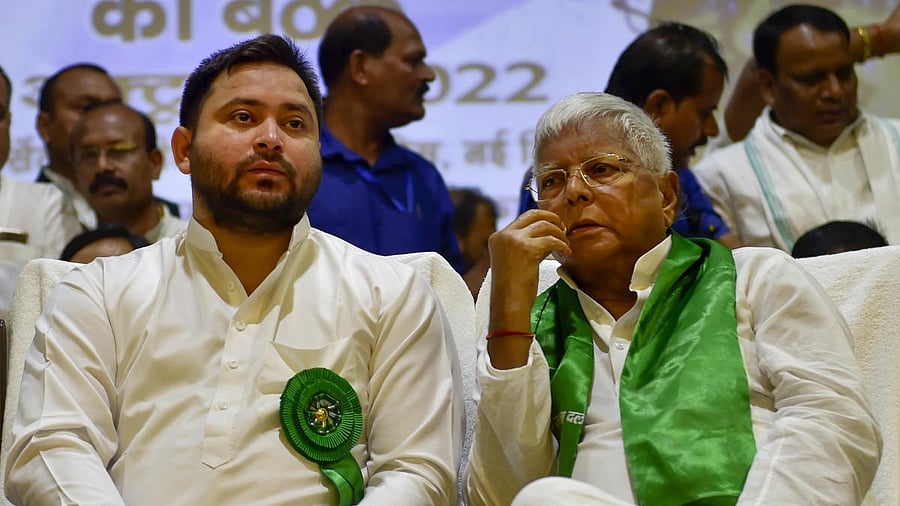
RJD chief Lalu Prasad with son and Raghopur candidate Tejashwi Yadav
Credit: PTI File Photo
The Rashtriya Janata Dal (RJD) and its face, Tejashwi Yadav, enter the 2025 Bihar assembly battle with clear ambition of winning it for the alliance — but multiple structural and political headwinds make a full return to power unlikely. Problems range from alliance arithmetic and legal trouble to organisational fissures and an assertive NDA strategy.
Seat-sharing woes and delays
With Opposition’s messy arithmetic, seat-sharing within the I.N.D.I.A. bloc has been painfully slow and publicly fractious. Delays and last-minute bargaining blunt the coordinated campaigning which is the most important aspect to defeat any incumbent. With negotiations dragging even as nomination deadlines near, the opposition risks sending mixed messages to voters and even leaving local cadres unprepared.
Legal issues involving Lalu family
Second, legal issues involving the first family of the party have been a potent campaign factor in Bihar for opponents for some years now. Corruption charges and court actions involving party patriarch Lalu Prasad Yadav and close family members adds to the lack of credibility and give rivals ready political ammunition. It's true that often voters are not swayed solely by courts, but such cases erode the moral high ground.
Internal party (in)discipline
Third, lack of internal discipline and confused leadership optics are worrying. Scenes of late-night symbol allocations by Lalu that too, unilaterally, and then Tejashwi stepping in and undoing his father's moves have been widely reported. This definitely displays intra-party tension, or rather discord in the family, that undercuts the narrative of a disciplined, alternative government-in-waiting. Voters watching those skirmishes get further distanced away and may prefer the appearance of order offered by the rival NDA.
Organised NDA in the battle
Fourth, the BJP-JDU combine, with added ammunition of LJP (Ramvilas)-HAM-RLSP, has sharpened its campaigning and candidate strategy to blunt anti-incumbency. This organized approach has allowed NDA to come up with early candidate lists and a targeted caste outreach. This also gives NDA a chance to propagate the confusion and internal fights within the I.N.D.I.A bloc in order to consolidate votes, complicating the RJD’s task of mobilising a broad, cross-cutting coalition quickly. The incumbents’ ground organisation remains formidable and is already activating at booth level — a practical advantage in a state where local networks decide many contests.
Alliance partners - A boon or baggage?
Finally, the RJD’s alliance calculations — Congress and Left partners included — are a mixed blessing. While an I.N.D.I.A-style coalition can pool anti-NDA votes, it also requires painful seat compromises. Reports that RJD conceded from its original ambitions while allocating significant seats to Congress show the trade-offs involved. The Left’s footprint is limited geographically, offering symbolic solidarity but little electoral heft in many winnable constituencies. Patchwork alliances therefore risk seat losses where unified local fronts would have been decisive.
None of these challenges are insurmountable in isolation — a crisp, corruption-free message; disciplined seat-sharing; and energetic grass-roots work could change the picture. But combined, they make a smooth, sweeping RJD comeback difficult in 2025. For Tejashwi and Lalu, the question is whether they can convert sympathy and nostalgia into disciplined organisation, united alliance, clean credentials and a tighter alliance — and fast. Until they do, the path back to power will remain steep and uncertain.